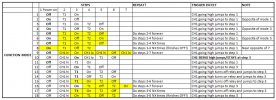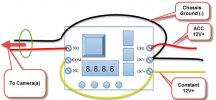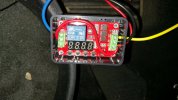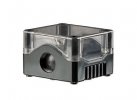one guy, an engineer completely re-wrote the manual (in real English) along with examples of how and when to use specific programs. He emailed me a copy of his manual, along with specific instructions on which mode I needed, an how to set it up. I've attached the manual.
That manual's a big improvement, wish I'd read it before playing with the one I just bought.
Still not easy to work out what the modes do at a glance. I've made up a table, might be helpful. I hope the terminology is clear.
There are probably lots of uses for this with dashcams (crude timelapse for example.)
There is a 5V version that might suit some purposes better than the 12V one.

Note that mode 10 is the only one where holding CH1 high works differently to a momentary high pulse.
Also modes 8 and 18 do not finish in the On state which you might have expected.
If anyone's thinking of experimenting with one of these, some tips:
For testing, you don't need to hook up an output device. The top blue LED lights when the relay is active. The relay also has a fairly loud click.
The CH1 (trigger) input doesn't need a pull down resistor (though it wouldn't be bad to include one in a final circuit.)
You could hook up a switch between CH1 and DC+, but it's easier and just as effective to have a short, stiff piece of wire screwed into CH1. Tap it against the DC+ socket's screw when you want to trigger the circuit.






